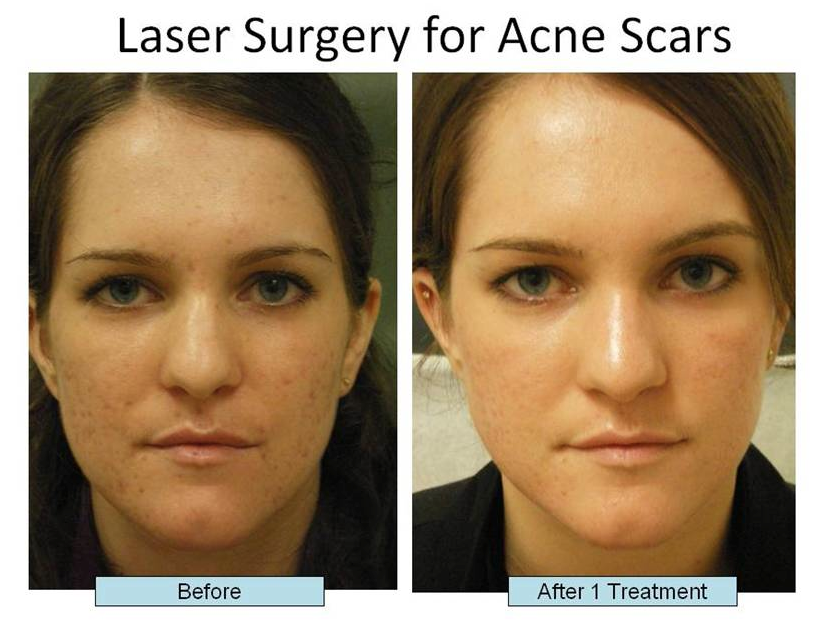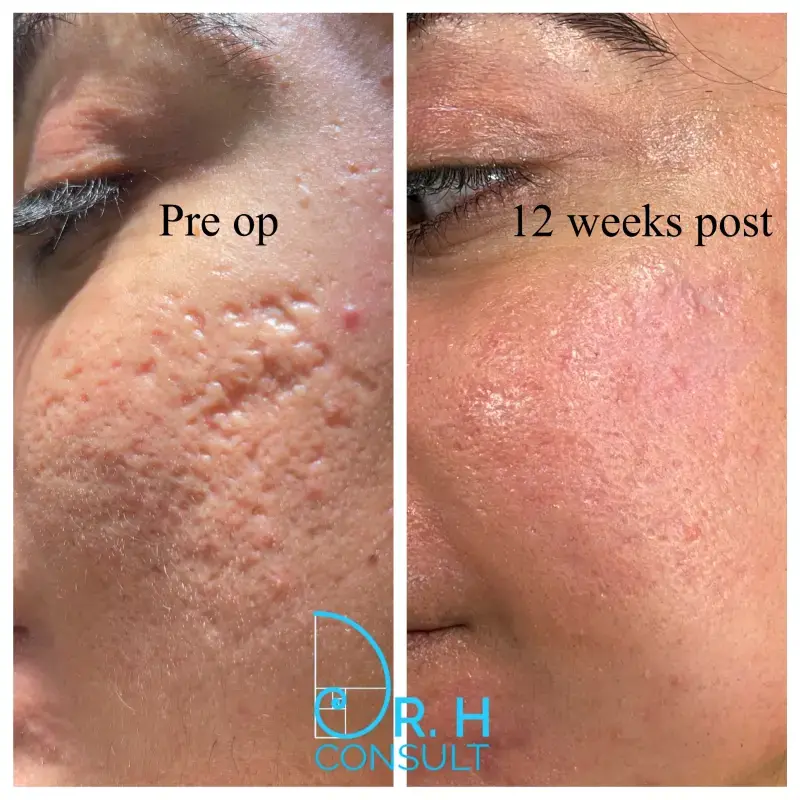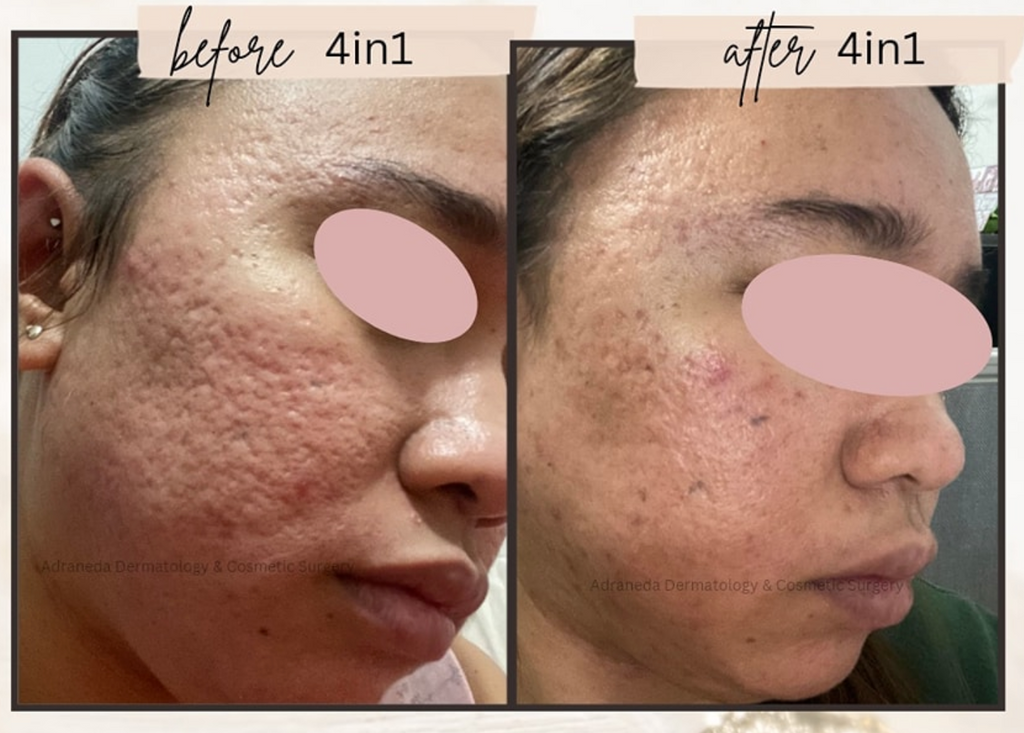Understanding the Numerous Skin Conditions and Reliable Treatment Choices for Acne Marks
Acne marks represent a complex interplay of skin conditions that substantially influence individuals' self-confidence and general skin wellness. As we check out the landscape of acne mark administration, it comes to be apparent that the trip towards clearer skin might involve even more than just topical remedies.
Kinds of Acne Scars
Acne marks can manifest in various types, each requiring details treatment techniques. The 2 primary groups of acne scars are atrophic and hypertrophic marks. Atrophic scars are defined by a loss of tissue, resulting in clinically depressed locations on the skin. These scars are further classified right into three subtypes: ice choice marks, which are deep and slim; boxcar scars, which are bigger and have well-defined sides; and rolling scars, which create a wave-like appearance because of uneven skin structure.
In contrast, hypertrophic scars arise from an overproduction of collagen during the recovery procedure, leading to increased locations on the skin. These scars are commonly strong and can differ in shade, sometimes showing up red or darker than the bordering skin.

Reasons of Acne Scarring
Marking happens as a result of the body's all-natural recovery reaction to swelling and injury created by acne lesions. When acne forms, it causes an inflammatory action, causing the release of various cytokines and development elements that advertise recovery. However, this procedure can often lead to too much tissue development or inadequate fixing, leading to scars.
The key sources of acne scarring consist of the seriousness of the acne itself, period of the lesions, and specific skin types. Extreme inflammatory acne, such as nodules and cysts, is more probable to result in scarring because of deeper cells damage. In addition, incorrect handling of acne sores, such as picking or pressing, can aggravate tissue injury and inflammation, raising the likelihood of scarring.
Genetic proneness also plays a substantial role; people with a family members history of scarring are at a greater threat. Skin type and color can influence mark development, as darker skin tones may experience post-inflammatory hyperpigmentation, while lighter skin might create atrophic marks.

Therapy Choices for Scarring
Efficient treatment choices for acne scarring vary depending on the kind and severity of the marks. Usually classified right into atrophic, hypertrophic, and keloid scars, these conditions call for customized strategies for ideal results.
For atrophic scars, which are characterized by a loss of tissue, therapies such as chemical peels, microdermabrasion, and laser treatment are frequently utilized. These methods promote skin renewal and boost collagen manufacturing, consequently enhancing skin texture. Subcision, a minimally invasive treatment, can likewise work by breaking up coarse bands underneath the skin.
Keloid and hypertrophic scars can be much more challenging to deal with. Choices include corticosteroid shots to minimize inflammation and squash the marks. acne scars treatment. In many cases, cryotherapy or laser treatment might be suggested to reduce their look
Surgical choices are available for severe scarring, where excision or skin grafting may be necessary. It's essential for people to talk to a skin doctor to examine their specific mark type and discuss one of the most ideal therapy strategy. Combining multiple therapies typically generates the best results, making sure that each person's distinct skin disease is addressed properly.
Home Remedies and All-natural Solutions
Natural remedies and natural linked here remedy can give an easily accessible technique for individuals looking for to improve the appearance of acne scars. Different components located in the home cooking area have shown prospective advantages in enhancing skin texture and advertising healing.
One popular remedy is aloe vera, recognized for its anti-inflammatory and comforting buildings. Applying fresh aloe vera gel directly onto the marks can assist enhance skin hydration and reduce inflammation. Likewise, honey possesses natural anti-bacterial and moisturizing qualities that can aid in scar recovery. It can be used click here to find out more as a mask, left on for half an hour prior to washing off.
One more efficient choice is lemon juice, which functions as an all-natural exfoliant and can lighten hyperpigmentation. It must be utilized carefully, as it may trigger photosensitivity. Oatmeal masks are also advantageous; their gentle exfoliation can aid get rid of dead skin cells while comforting irritability.
Necessary oils, such as tea tree oil and lavender oil, can better sustain scar healing as a result of their antimicrobial properties. It is crucial to execute a spot test before using any type of treatment to ensure there are no adverse responses. These natural solutions can be a corresponding technique in the journey to diminish acne scars.
Avoiding Future Scarring
Adopting a proactive strategy to skincare can considerably reduce the threat of developing future acne marks. One of the key approaches is to handle acne effectively as it emerges (acne treatment for sensitive skin). This involves making use of non-comedogenic skincare items and medications suggested by dermatologists that target acne without aggravating the skin. Regular cleaning, peeling, and hydration can assist keep helpful hints skin health and wellness and protect against clogged up pores.
Furthermore, staying clear of the temptation to squeeze or choose acne sores is essential, as this can cause inflammation and succeeding scarring. Rather, people ought to concentrate on using topical therapies that promote recovery and decrease swelling. Active ingredients such as salicylic acid, benzoyl peroxide, and retinoids are known for their effectiveness in handling acne and decreasing scars.

Finally, preserving a healthy and balanced diet rich in antioxidants and remaining moisturized assistances skin regeneration. By carrying out these safety nets, people can considerably reduce their danger of future scarring and advertise total skin wellness.
Conclusion
In final thought, a detailed understanding of acne scars, encompassing both hypertrophic and atrophic kinds, is vital for efficient therapy methods. Assessment with a dermatologist continues to be necessary to create customized approaches that think about individual skin kinds and scar severity, inevitably enhancing the efficiency of scar management strategies.
Acne scars stand for a complicated interaction of skin conditions that significantly effect individuals' self-confidence and overall skin wellness. The two key categories of acne marks are atrophic and hypertrophic scars. These scars are additional identified right into three subtypes: ice pick marks, which are slim and deep; boxcar scars, which are bigger and have well-defined edges; and rolling scars, which produce a wave-like look due to uneven skin texture.
A comprehensive assessment with a dermatologist can aid establish the most proper intervention, taking into account the person's skin type, scar intensity, and overall skin health and wellness.
Appointment with a dermatologist stays essential to create tailored methods that think about specific skin types and scar severity, eventually enhancing the effectiveness of scar administration techniques.